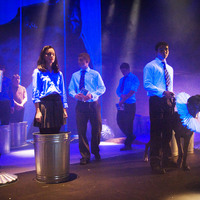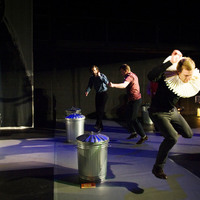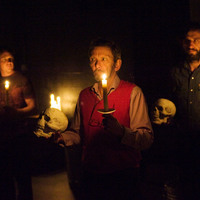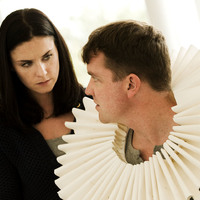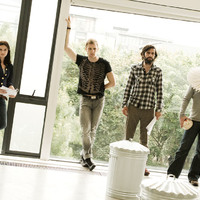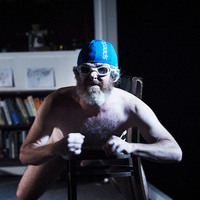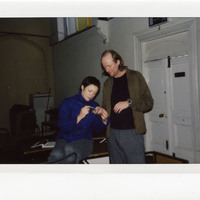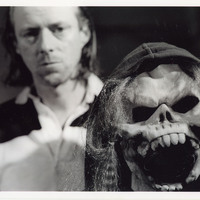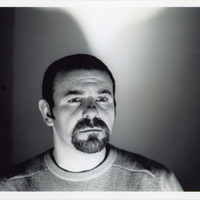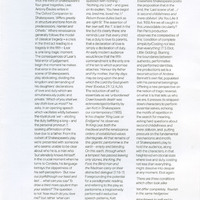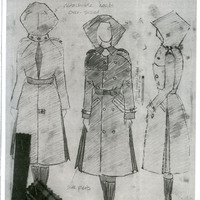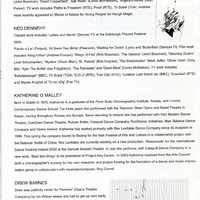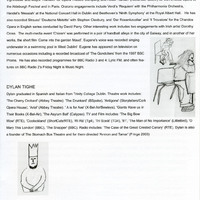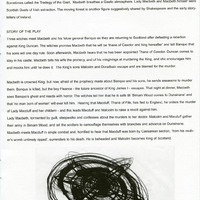Pan Pan and Shakespeare – Parts Upon the Stage
In their thirty years of existence, Pan Pan have engaged with many of Shakespeare’s works, questioning what it is to produce, stage, and indeed, witness a Shakespeare play in our contemporary times. Pan Pan have adapted or produced four of Shakespeare’s most famous plays, including Macbeth and Hamlet, into new works, and which brought audiences into a new theatrical and dramaturgical contexts with Shakespeare’s plays, reframing and revising them to reflect our modern times, perspectives, and, of course, all within Pan Pan’s distinctive aesthetic, as well as collaborating with international co-producing partners on some of these productions.
Mac-beth 7 (2004), was an adaptation of Shakespeare’s Macbeth, a name some theatre practitioners believe should not be uttered on or around the stage to avoid bad luck, preferring to call it ‘the Scottish Play’. Pan Pan’s choice to call their version Mac-beth 7 stems from the fact that it was the seventh time director Gavin Quinn witnessed a performance of the play. Mac-beth 7 was not a straightforward adaptation. It focused less on the actual plot of Shakespeare’s original, and instead reflected on the way the play is taught to children in schools, and how many people interact with Macbeth and its various themes of power, nation, and identity. The staging of the pay merged ‘traditional’ costumes with a clean, modern set, featuring school desks and a glass box, amongst other pieces.
About the play, Quinn asked audiences to consider why do audiences go see Shakespeare today?
“Is it to give us tears and indignation, to mingle humour and tragedy? Make us question, challenge ourselves? To induce a cathartic effect? Is this ‘Katharsis’ the function of the performance? Human nature in its numerous guises. Its fragile charm and brilliant artificiality. This is the reality of the live performance, the reality of the stage over study of theatre, over this play as literature.”
Mac-Beth 7 was performed at Crossover Festival, Noordezan Theatre, 2004 and also at Project Arts Centre, Dublin, also in 2004.
In 2010, Pan Pan tackled Shakespeare’s Hamlet in their new version, The Rehearsal: Playing the Dane, which first opened at the Samuel Beckett Theatre during the Dublin Theatre Festival. Adopting the title role in Hamlet is often considered a significant professional and artistic milestone in any actor’s career. The Rehearsal plays with this concept. The play allows the audience to see a number of actors perform snippets of the original text, after which they are allowed to choose who they would like to see play Hamlet in the remainder of the play. Each performance, as a result, is unique (complete with a cameo appearance by a Great Dane dog in the performance). The Rehearsal was the recipient of Best Production and Best Set Design at the 2010 Irish Times Irish Theatre Awards and toured Ireland, Europe, China, U.S.A., New Zealand and Australia.
Everyone is King Lear in his Own Home (2012) adapted Shakespeare’s tragedy King Lear, one of the Bard’s more ‘brutal’ plays in both its contents and visual features. The production opened at Smock Alley Theatre as part of the Dublin Theatre Festival and focused on themes of mental and bodily decay, madness and memory, of a family situated within in a contemporary apartment. As action, ritual, and form are expressed and examined in the play, it reflects a unique take on the ‘every day lives’ of our private lives. Pan Pan have also staged the show using only two actors (Andrew Bennet and Judith Roddy) in an intimate edition of this harrowing tale.
In 2017, Pan Pan collaborated with Theatre Bonn from Germany to create The Tempest, based on Shakespeare’s play by the same name. Once again, this production stood out due to its impressive visuals, reframing Shakespeare for a modern, avant-garde audience. Following the success of their adaptation of Aldous Huxley’s 1932 novel, Brave New World, previously co-produced and adapted for the stage by Theatre Bonn, this was the second collaboration by Pan Pan and Theatre Bonn and on these pieces of work which presented new visions of dystopian worlds and of human existence in a fragile society.




